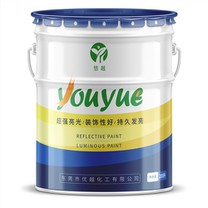Here are some additional details about fluorescent paint and luminous paint:
Fluorescent Paint:
Fluorescent pigments used in fluorescent paint contain compounds called fluorescent dyes or chromophores.
These dyes have the ability to absorb high-energy UV light (invisible to the human eye) and convert it into lower-energy visible light.
The absorbed UV light excites the electrons in the dye molecules, which then emit light at longer wavelengths within the visible spectrum.
Fluorescent paints are available in a wide range of vibrant colors, including yellows, oranges, pinks, and greens, that appear highly saturated and intense under normal daylight conditions.
They are especially useful for applications where visibility and attention are crucial, such as safety warnings, traffic signs, sports equipment, and artistic projects.
The fluorescent effect of these paints is most pronounced under UV light sources, such as blacklights or ultraviolet lamps.
Luminous Paint (Glow-in-the-Dark Paint):
Luminous pigments used in glow-in-the-dark paint contain phosphors, which are substances that exhibit phosphorescence.
Phosphorescence is a phenomenon where a material absorbs light energy and slowly releases it over an extended period of time.
When exposed to light, the phosphors in luminous paint become excited and store energy.
In the absence of light, the stored energy is gradually released as visible light, resulting in a glow or luminescent effect.
Luminous paints are often composed of a binder material that holds the phosphorescent pigments together and allows them to be applied as a coating.
The glow effect of luminous paints tends to be more pronounced in dark or low-light environments, as the contrast with the surroundings enhances visibility.
The duration and intensity of the glow depend on factors such as the quality of the phosphorescent pigments and the amount of exposure to light for charging.
Both fluorescent paint and luminous paint have unique properties and are used for different purposes based on their distinctive light-emitting characteristics.





